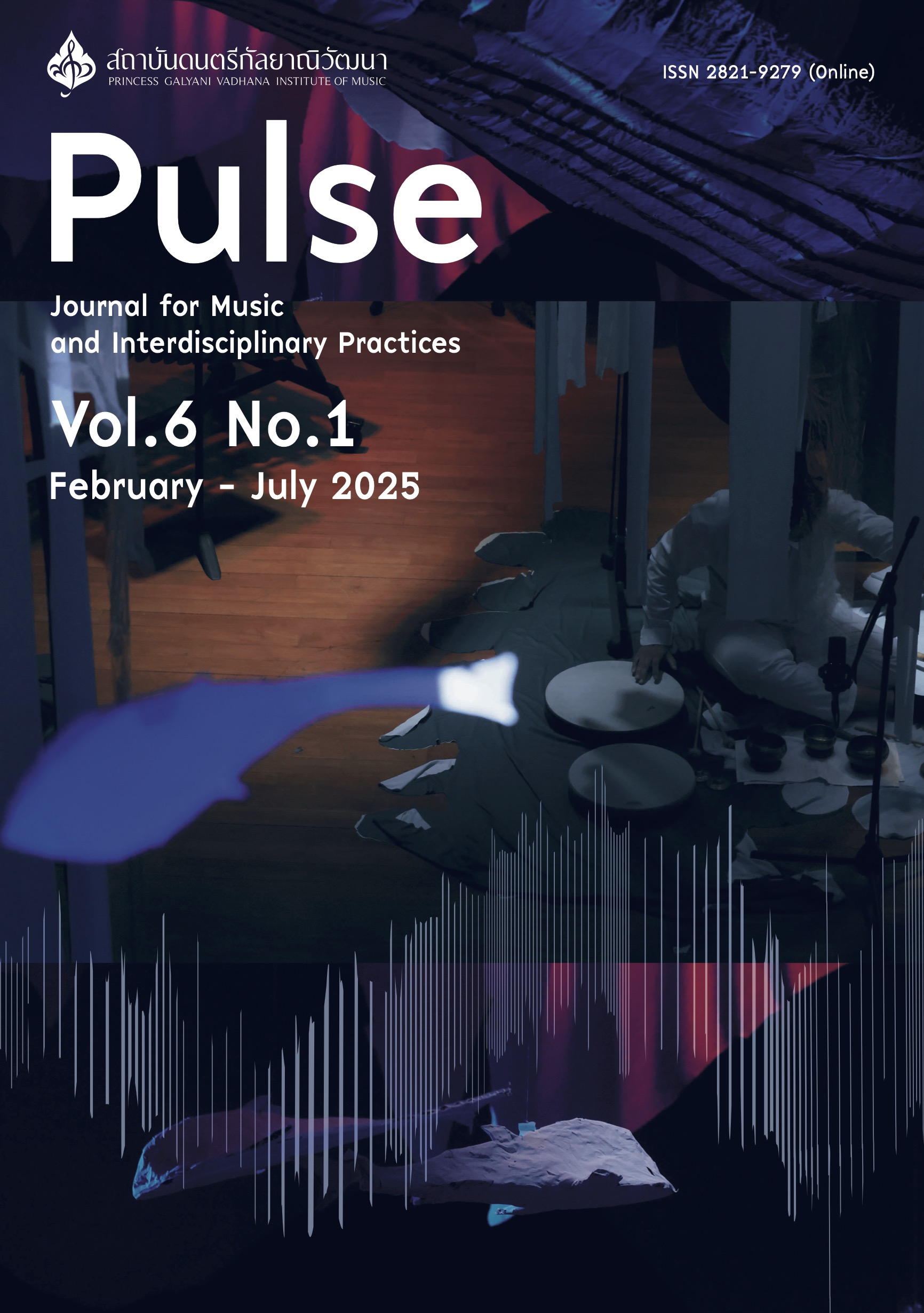In a world increasingly saturated with noise, the act of intentional listening becomes radical. PULSE: Journal for Music and Interdisciplinary, in No.6, Issue 1, invites us to listen, but to dwell in resonance. The articles echo and ripple outward from their local contexts—Philippine bamboo, Ghanaian classrooms, Thai exhibition spaces, and Rajabhat rehearsal halls—into broader questions of pedagogy, identity, power, and care.
We begin with Tultugan: Contextualizing Music Education through the Artisan’s Performance-Teaching Process by Hermie F. Cartagena, a lyrical ethnography that draws us into the world of indigenous bamboo musical practices in the Philippines. Through the TCTF, Transmission Framework, Cartagena reframes artistry as pedagogy and performance as epistemology. Here, knowledge is resonant—passed from hand to hand, ear to ear, in rhythm, in silence, in gesture.
This deep resonance finds institutional counterpoint in Amanut Chantarawirote’s Teacher Agency among Music Teachers in Thailand: An Ecological Perspective. With clarity and conviction, unpacking how Thai music teachers navigate shifting landscapes of reform, expectation, and tradition. Grounded in ecological theory, the article reclaims teacher agency as a dynamic process—emergent, adaptive, and intimately tied to community and cultural responsibility.
The tempo shifts, geographically and conceptually, in Alfred Addaquay’s From Classroom to Career in Ghana, a powerful study that unearths the layers of social stigma, economic aspiration, and policy neglect that frame music education in Ghana. Anchored in Amartya Sen’s Capability Approach and decolonial thinking, Addaquay’s work is both critique and call: a reminder that when music is misused, so too are the dreams, identities, and potentials it carries. It inspires hope and shows the transformative power of music education.
Yet, even within formal institutions, music continues to space for healing and encounter. In Music Therapy in an Interdisciplinary Classroom, Smatya Wathawathana presents an elective course where students from diverse academic backgrounds engage with music as a therapeutic process. The Introduction of Music Therapy classroom becomes a liminal space—between disciplines, between certainty and vulnerability—where music restores, connects, and provokes.
These themes of immersion and reflection reach an aesthetic culmination in Art Pieces and Audiences on the Fading Boundary by Sarupong Sutprasert et al., in their poetic analysis of the immersive exhibition Voices Beneath the Loud Waves. Sound becomes solitude, the audience becomes participant, and the gallery becomes a site of collective introspection. The 52-hertz whale—forever singing alone—becomes a metaphor and a mirror. This article highlighs the importance of the audience's role in the immersive exhibition, making them feel valued and integral to the experience.
This issue closes with a crescendo: Methods for Creating the Sound of the Rajabhat Samphan Winds by Adiwach Panapongpaisarn et al., chronicling a cross-institutional wind ensemble across eight Rajabhat universities. The article reveals how sonic cohesion is achieved through shared intention, careful pedagogy, and mutual listening, embodied in the legacy of Edward S. Lisk and Niphat Kanjanahut. This collaborative nature of the wind ensemble makes the audience feel connected and part of a community.
Across these six articles, we are challenged to think differently about how we teach, how we listen, and how we locate ourselves within ever-shifting soundscapes of meaning, which encompass the literal sounds we hear through the cultural, social, and personal contexts that shape our understanding of those sounds. May this PULSE issue linger within you like a sustained chord—resonating, provoking, and renewing your sense of what music and interdisciplinary practice might yet become.
The Pulse Editorial Team
Published: 2025-07-31


